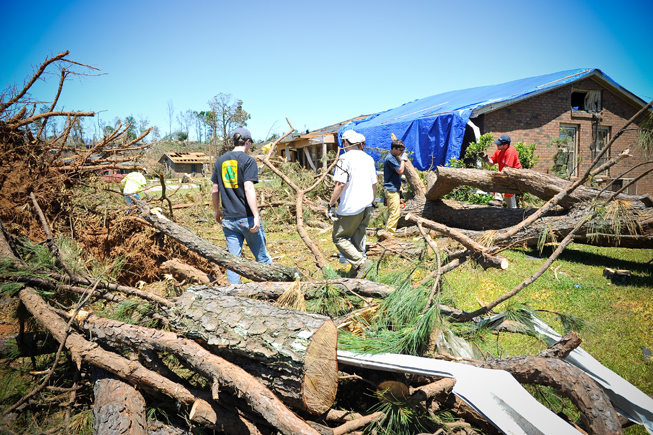
Alabama is no stranger to severe weather. In fact, it can happen any month of the year and any time, day or night. To help you prepare, The University of Alabama is offering information on severe weather and safety tips during Severe Weather Awareness Week, Feb. 22 – 26.
While the 2013 movie “Sharknado” may have brought some comic relief, real tornadoes are nothing to laugh at.
A tornado is a violently rotating column of air that extends from the base of a thunderstorm to the ground that can cause massive destruction and death as Tuscaloosa experienced on April 27, 2011.
Unlike other areas in the U.S., Alabama has two distinct tornado seasons. While most tornadoes happen in the spring from March through May, or in the fall from November to early December, tornadoes can happen every month. According to the National Weather Service, more than 2,250 tornadoes have struck Alabama since 1950 with more than 75 hitting Tuscaloosa County.

Know the difference between a tornado watch and a warning
Tornado watches are issued by the Storm Prediction Center for counties where tornadoes may occur. A watch means conditions are favorable for tornadoes to form in and near the watch area. When a watch is issued, you should review your emergency plans, check your supplies and be ready to move to a safe place.
Tornado warnings are issued by local National Weather Service offices when a tornado has been sighted or is indicated on weather radar. Warnings cover much smaller areas than watches and are drawn as polygons on the map. When a warning is issued there is imminent danger to life and property, and you should immediately take action.
Before severe weather strikes, familiarize yourself with UA’s severe weather guidelines and make sure you know where you live.
UA will issue UA Alerts for all tornado watches and warnings. Weather information, including watches and warnings, is always available in the UA Safety app.
Where to seek shelter

The University of Alabama opens campus storm shelters and Best Available Refuge Areas, or BARAs, when a tornado watch or warning is issued. Visit the Office of Emergency Management’s website to learn more about sheltering during the pandemic.
To locate the nearest shelter or BARA, use the explore feature in the UA Safety app.
If a tornado warning is issued and you are unable to get to a campus storm shelter, each campus building has a BARA. The BARA location can be found on the Building Emergency Plan, which is posted near each entry and exit location, and in the UA Safety app.
If you are not on campus when a warning is issued, seek shelter on the lowest floor in the center of the building and stay away from windows. Do not seek shelter in a vehicle or a mobile home. If you live in an apartment building, seek shelter on the lowest level. Do not remain in apartments on the upper floors.
For more severe weather safety tips, visit the Office of Emergency Management’s website, download the UA Safety app or listen to 92.5 FM UA Info Radio.
Learn more about tornado safety
Contact
Shane Dorrill, UA communications, shane.dorrill@ua.edu
